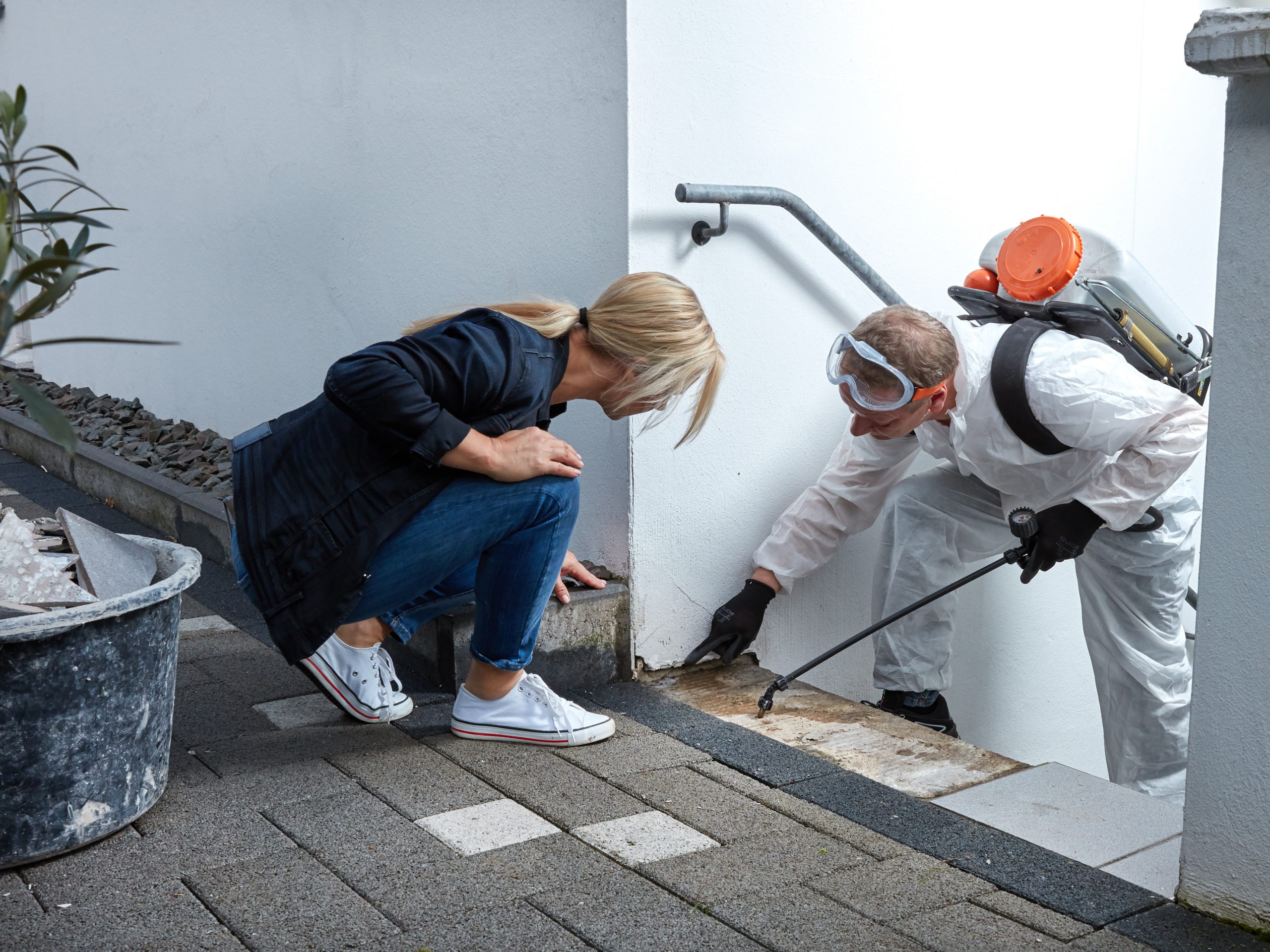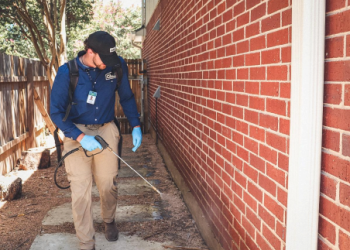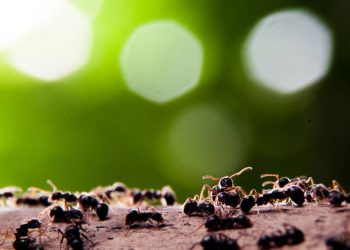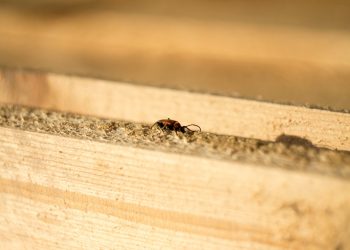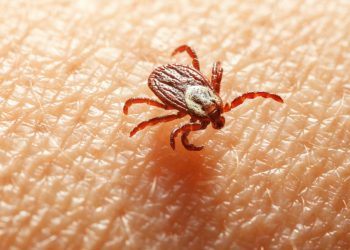Table of Contents
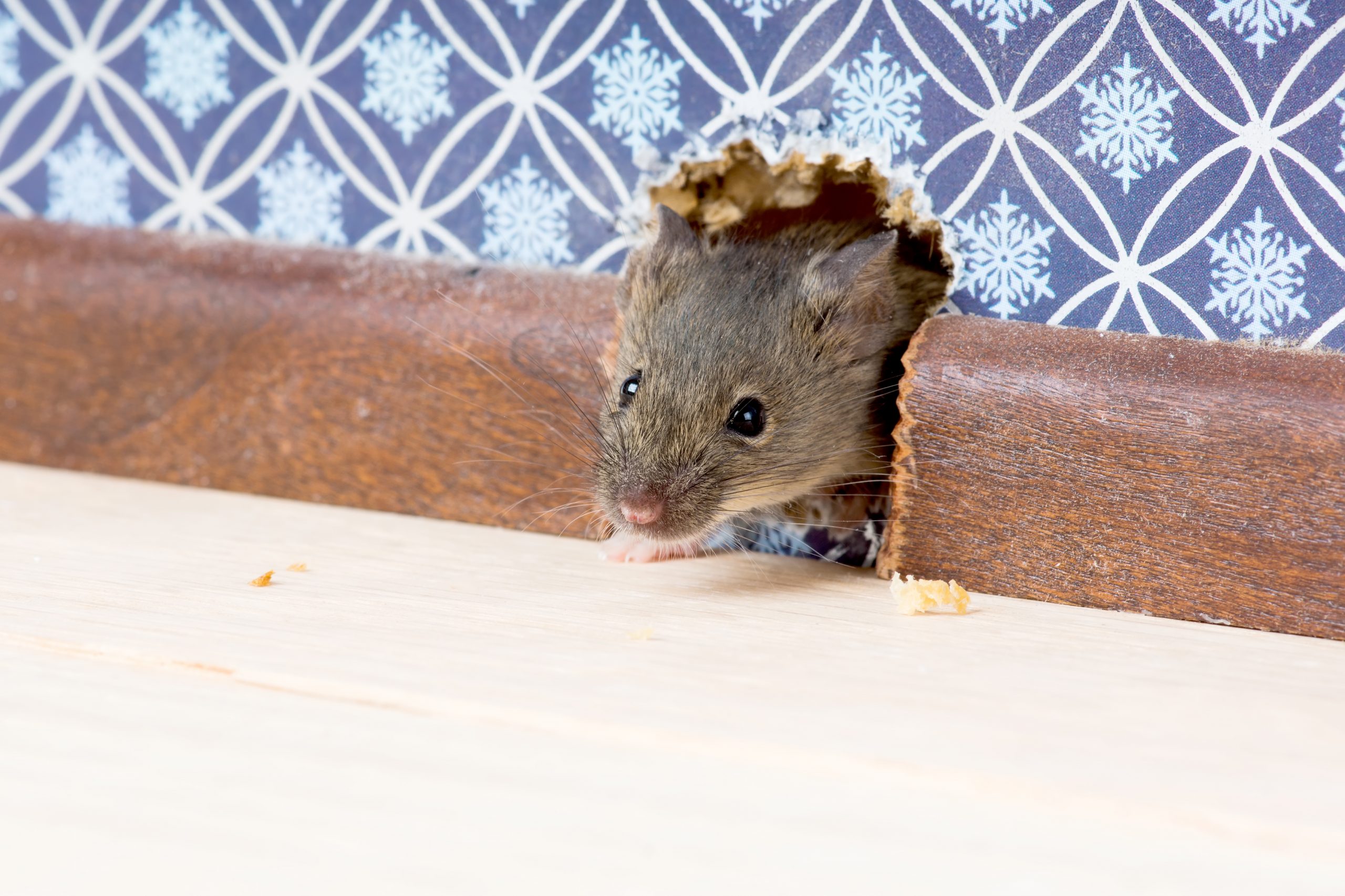
Of the hole until only the head is visible
If you take pride in the cleanliness of your home, you’ll most likely receive a great shock when you hear the crunch of a cockroach’s shell under your sneaker or see a long line of ants making waves across your tiled kitchen floor. While you may take a second to appreciate their structured formation, your next reaction is probably to squirm or reach for some insecticide.
Pests can be clever. Wiping down the tables after a meal and shutting the windows at night may not be enough to keep them from intruding on your peace. Ensuring that they stay away after ridding your house of them isn’t always an easy task either. You may wish that you could simply pop on a Snow White dress, sing a song of bubbles and soap and will those little buggers to sweep themselves into the dust pan. Alas, such cleaning techniques seem to only work in fairytales. In real life it takes a tad more effort, sweat and consideration.
When determining the most appropriate approach to pest control, it’s important to understand what types of mischievous creatures are lurking in, under and around your home. While some techniques may prove beneficial in keeping a wide variety of species away, others may require you to identify and implement a method designed specifically for them, in case your blanket attempt hasn’t proven effective. For example, realizing you have an ant infestation can send shivers down your spine, and leave you wondering if the invasion can truly be stopped. However, there’s no need to despair, since professional ant exterminators can stop the current invasion and ensure your ant problems do not return.
Read on to discover the common types of house pests, the risks they may pose to your health as well as the myriad of ways you can attempt to remove/control the infestation.
Common pests around the home
If you’re known as being a gigantic scaredy-cat around creepy-crawlies, the mere, vague sight of a small black, moving blob in the corner of the living room, or the faint shadow of spider legs projected on the roof, may set your heart pumping. The lack of understanding around what these little guy’s names are may worsen the situation and lead you to think that your whole home is being taken over by gremlins. Keeping yourself in the dark, however, won’t help anything.
It’s recommended to first understand what’s in your home before choosing your method of pest control. Removing the mystery may also reduce your anxiety. Creatures can sometimes come across as less threatening when you can at least put a name to their six (or eight) wiggly legs.
The types of pests found around your home will differ depending upon the country and area in which you reside. In the United States, however, the following critters are most commonly found:
- Ants
- Bats
- Spiders
- Bed bugs
- Termites
- Silverfish
- Centipedes
- Cockroaches
- Mice and rats
- Camel crickets
- Fleas and gnats
- Wasps and bees
- Flies, mosquitoes, moths.
Researching the habits and temperament of the pests listed above may be wise in order to better understand how to eradicate them. Cockroaches, for example, may prefer to set up camp in warmer regions of the house, while others, such as ants, choose the dry soil of the lawn.
They may seem to be communicating with each other on who gets which room, thinking you won’t catch on. Upon closer inspection, however, you should be able to figure it out and act accordingly.
Health risks associated with pests
You may observe a few unwanted creatures scattered here and there and choose to ignore them, thinking they pose no alarming threat to you or your family. Regardless, however, of who you may pass off as an acceptable houseguest, it’s important to acknowledge the negative impacts they may have upon your health. Flies, mice and mosquitos, for example, have all been known to carry diseases.
Common health hazards related to pests include:
- Asthma, allergies and respiratory issues—caused by roach carcasses and droppings.
- West Nile Virus—transmitted by infected mosquitoes.
- Hantavirus and Leptospirosis—carried by rodents.
- Infections—caused by puncture wounds or exposure to waste/droppings.
- Venom—the potentially life-threatening consequences of venomous bites.
Methods of prevention and control
1. Hire professional pest control services
If the thought of pest-proofing your home is too overwhelming or you simply can’t find the time to dedicate to such a task, hiring professionals to take care of the problem may serve you well. Undertaking methods of pest control yourself may be effective in preventing and deterring insects and rodents from imposing on your daily activities. Professional help, however, is often considered more beneficial in completely eliminating the problem, rather than simply lessening it. Utilizing professional services is also wise, as those implementing the procedures will be trained in how to properly use and apply potentially hazardous chemicals and solutions.
Services offered may include:
- Free inspections
- Termite treatment
- Spot treatment
- Liquid perimeter treatment
- Baits
- Bed bug treatments
- Room by room treatment
- Heat treatments
- Pigeon/bird control
- Bees/wasp removal
- Wildlife maintenance
- Spider, cockroach and ant elimination.
2. Keep the kitchen clean
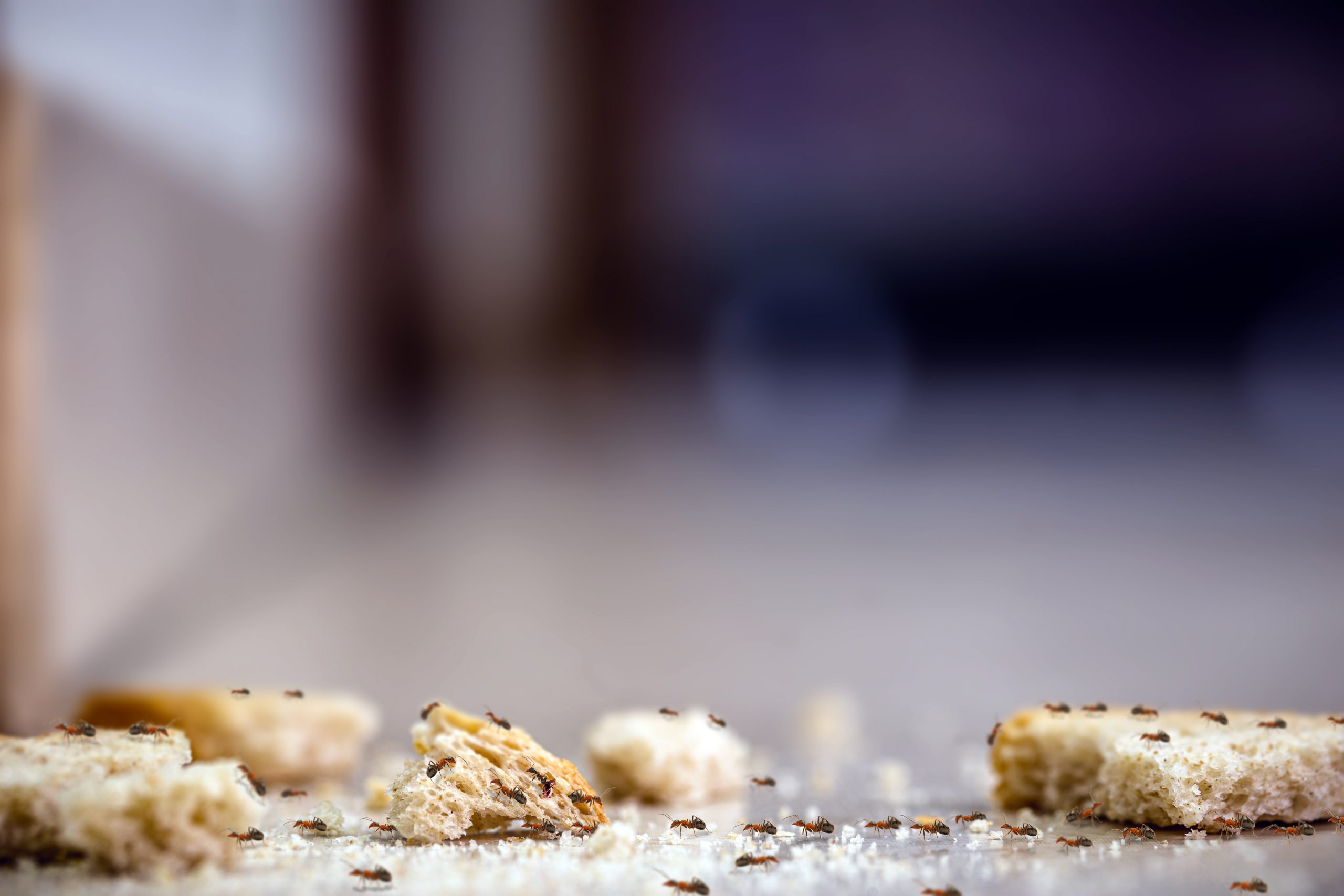
It shouldn’t surprise you to learn that the cleaner your kitchen is, the less likely insects and bugs are to invade it. Pests thrive within the cluttered areas of your house, especially ones containing food particles. Just like a cat is drawn to your canned tuna in the pantry, insects will be drawn to any food scraps and crumbs they can find.
It’s recommended that you thoroughly wipe down the counters after cooking and regularly clean out the cabinets and drawers in order to avoid any unpleasant guests. Keeping your food items and ingredients in sealed bags and containers is also wise.
Pests and rodents are brilliant at sniffing out food, even through something like a tiny crack in your cereal box. Properly packaging your edible goods away may save you a lot of hassle, as well as your children’s screams as they open their favorite crackers only to find clumps of ants.
Vacuuming, mopping and sweeping not only your kitchen, but also the rest of the house, is important to lessen the presence of anything that might attract those hungry little nuisances into your home.
3. Properly dispose of garbage
The waste residing in and around your kitchen trash may attract many unwelcome guests, if not appropriately taken care of. This may involve sticky spills down the side, or crumbs collecting at its base. The trash accumulating in your yard and outside cans may also become a cause for concern if left unattended. Ensuring your spaces are well-kept and free of any pest-attracting grime or food splatters is crucial. This means taking the garbage out daily and avoiding any accumulation.
It’s also wise to confirm that the lids on all of your rubbish bins are properly fitted to stop any creatures from getting in, as well as to regularly clean the bins themselves and areas surrounding them. It’s easy to toss all of your rubbish in the can, without noticing the stray items that have spilt out onto the ground. These items are the perfect lure and should be removed as soon as possible. Rinsing your recyclables may also save you a lot of hassle, especially if your bins don’t have lids. Removing any and all traces of food from packaging can aid in keeping pests away as well.
4. Don’t allow water to stand
Pests, especially mosquitoes, are attracted to stagnant water. These spots around your home can, therefore, become a breeding ground for disease-infestation (malaria, dengue). It’s recommended to effectively clean out your drains, keep any household buckets dry after use as well as any other items that may get wet or puddly.
5. Make use of the ingredients you have
If you’re tempted to throw away some of the herbs, spices and other cooking ingredients you have around, determining whether they can be used against pests first, may be wise.
Tips and tricks:
- Fresh herbs such as rosemary or sage can deter mosquitoes.
- A mixture of white vinegar, water and peppermint (or eucalyptus) can be used to wipe away the trail that ants leave—leading to food sources.
- Chopped up onions may repel spiders.
- Pouring apple cider vinegar into a bowl, covering it with plastic wrap and poking a few small holes into the top, is recommended to lure and trap fruit flies.
- You may treat coffee like your oxygen, but due to the potent smell, pests are often disgusted and deterred by it—especially ants, slugs and snails. Keeping some grounds near any possible entry points and even burning it may aid you in keeping your home critter-free.
- Bananas may deter aphids if you place them near the stems of your plants under the soil in your garden.
- Cornmeal can repel ants.
6. Optimize the structural integrity of your home
You may have moved into a fresh, four-year-old house or built yours from the bottom up. Regardless, however, of how fool-proof you think your walls, floors, windows and doors are, overtime a few cracks and gaps are expected to form. The downside of this phenomenon is that those little imperfections can welcome creatures in with mint-painted, floral-stenciled arms.
Inspecting your home from the outside and the inside is a good way to avoid missing any sneaky splits and crevasses in the walls and roof. If you’re unsure as to whether a hole leads directly into the great outdoors, observing whether or not you can feel any airflow sneaking in or out is helpful.
Once you’ve identified any gaps—which potentially live behind the refrigerator, under the kitchen cabinets or around your pipes, vents and cables—it’s essential to properly seal them up. This may be done in several different ways, however, caulking them closed, using copper mesh or expanding foam insulation (especially for larger gaps) is recommended.
7. Keep your bedding and furniture clean
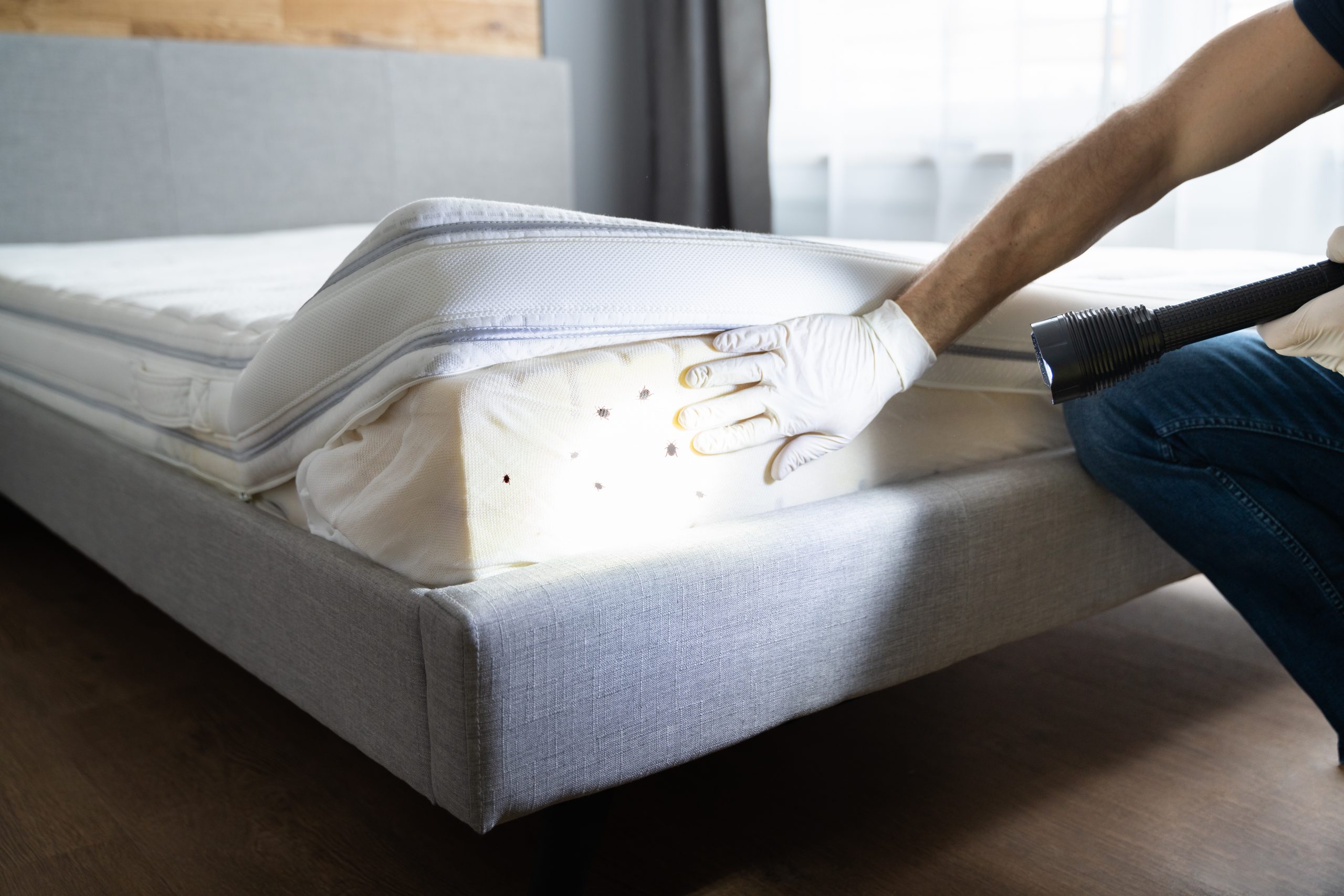
If you’ve woken up on several occasions with small itchy bumps or welts on your skin’s surface, a bedbug infestation may be taking place in the confines of your mattress, bed frame or bedhead. In order to stop those pesky creatures from disturbing your sleep and ruining your morning, you may attempt some of the following remedies:
- Regularly wash and change your bedding (every week or two).
- Heat treatment: if implemented by a professional pest control company, your bedbug problem may disappear within a day.
- Steam your furniture (another form of heat treatment).
- Insecticide-based chemical treatment.
8. Fix nets and screens on your windows and doors
At one point in your life, you’ve probably walked head first into a glass door. While these moments can result in great party stories, the red bump on your nose might say otherwise. Pests may very well follow our lead of carelessly bashing into clear surfaces. When leaving those surfaces open and vulnerable to the natural elements, however, it may be wise to fasten an extra layer of protection to catch and stop those sneaky suspects in their tracks.
Window nets and fly screens are an effective method of deterring pests such as spiders, cockroaches, mosquitoes, bees and flies from entering your place of refuge. They’ll also offer you the ventilation and cross-breeze you desire when opening up your rooms in the summer.
9. Alter your bulbs
If your partner has an odd obsession with technology—lights in particular—this may be your chance to let them run wild with unique colors and bulbs. While you may prefer the standard bright white or bluish lights (mercury, vapor, incandescent or florescent), these are actually considered most attractive to insects. High-pressure sodium vapour or halogen lights of a pinkish, yellowish or orange tinge are recommended as they’re less likely to draw in bugs.
10. Pesticides
If you decide to give pesticides a go without professional help, it’s crucial for you to follow the safety instructions, because while they can be effective in harming or killing pests, they can also have negative impacts upon your own health.
Safety advice and tips include:
- Consider non-chemical approaches first.
- Only buying as much as you need.
- Ensure your use of pesticides is worth it.
- Store them properly in their original containers and ensure the lids are fitted securely on.
- Keep away from children and other individuals or animals who may be harmed.
- Store away from food and drink.
- Identify the pest before you buy the pesticides to ensure it’s appropriate.
- Choose the least toxic product available.
- Don’t overuse.
- Avoid mixing pesticides together.
- Wear any required protective gear.
- Avoid eating, smoking or drinking while using pesticides.
- Wash your hands thoroughly after use.
If used indoors:
- Relocate pets.
- Cover up anything that may be affected.
- Avoid using surface sprays on commonly touched areas.
- Leave while the chemicals are activating.
- Air out the rooms afterwards.
If used outdoors:
- Close all windows and doors.
- Avoid use on rainy and/or windy days.
- Cover up anything that may be affected (BBQ, water bowls).
- Avoid watering the garden after use.
Final thoughts
Pest infestations can negatively affect not only your everyday life and habits, but also your health. If left unattended, you may fall victim to pricey and time-consuming consequences. Choosing the appropriate methods of prevention and eradication targeted towards the specific species living in and around your home is crucial. If a few techniques fail to work, don’t be afraid to seek out professional advice and services.

